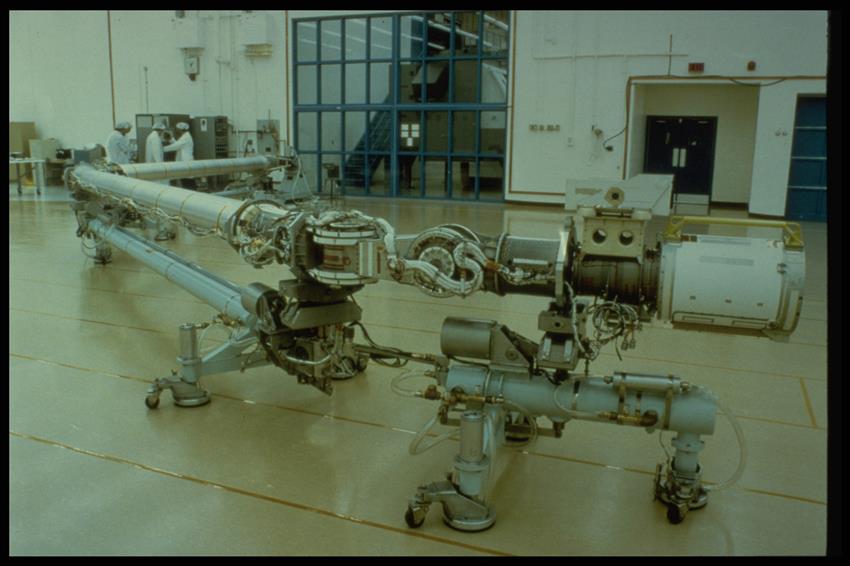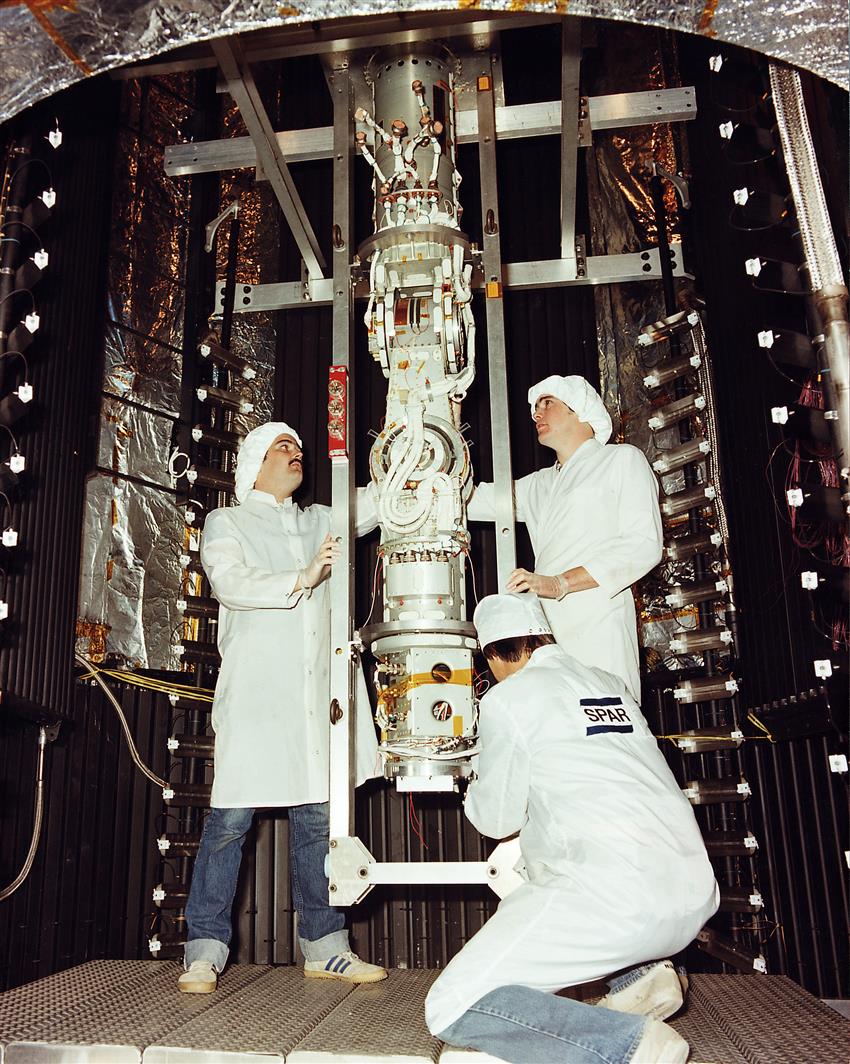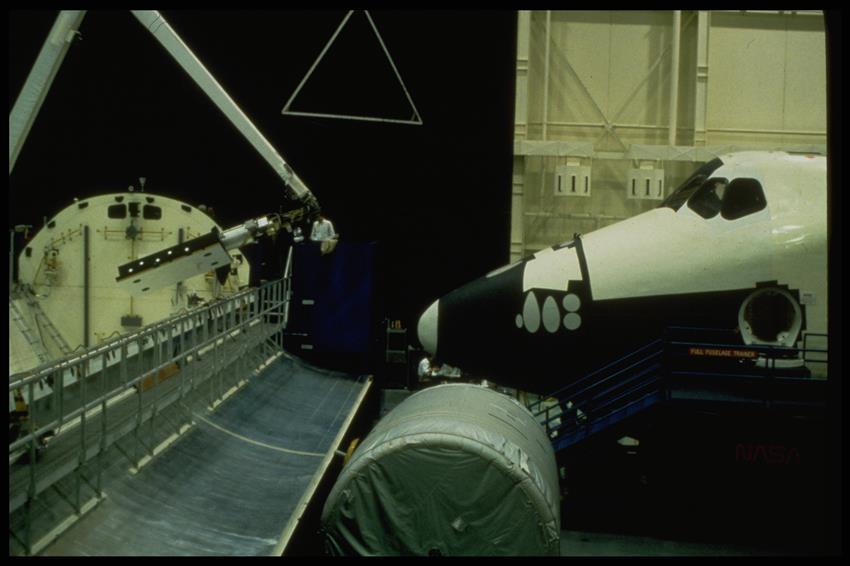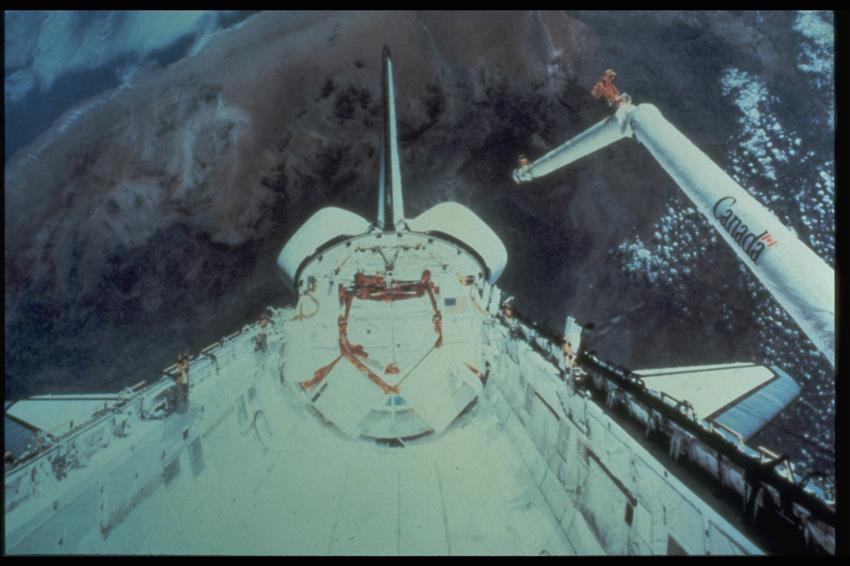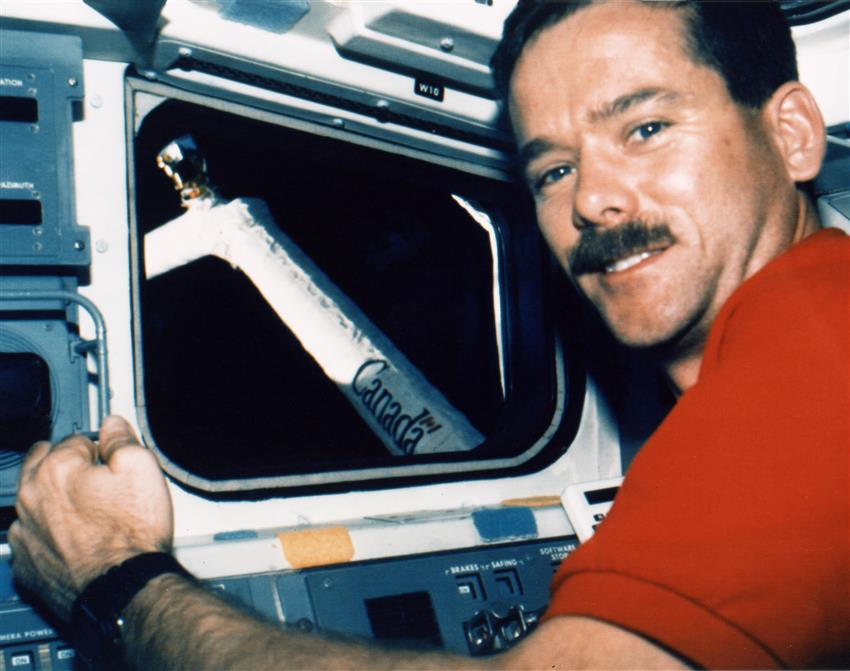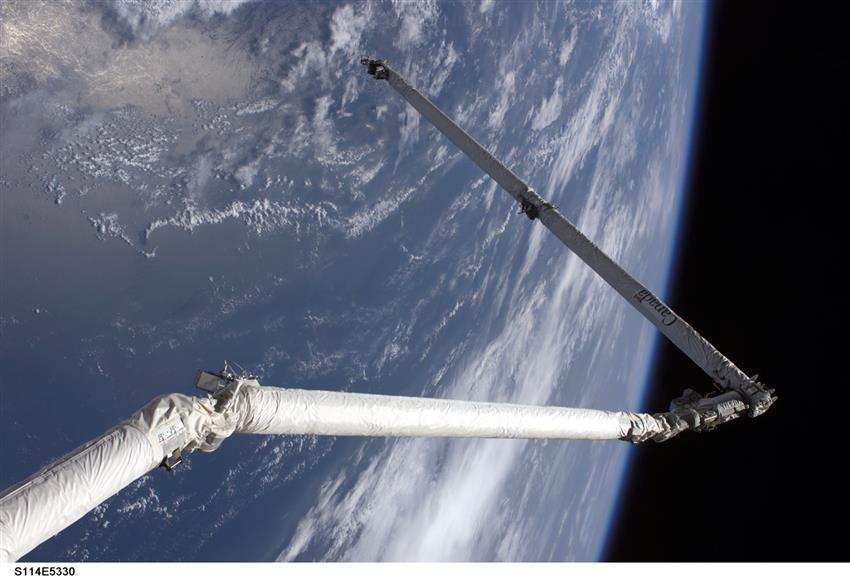About Canadarm
Canadarm is Canada's most famous technological achievement in the field of robotics. This robotic arm supported U.S. space shuttle missions for 30 years (–).
Here are the milestones of this legend.
Design
The challenge: build a tool to function flawlessly in space with the dexterity of a human arm.
Canadarm was designed in response to a need announced by NASA in the early 1970s. At that time, NASA was developing a new Space Transportation System: the space shuttle.
The manipulator arm had to be able to unload the contents of the space shuttle's payload bay.
A number of Canadian firms participated in the project: DSMA Atcon, Spar, CAE Electronic and RCA.
Construction
Canada had to meet NASA's stringent demands in terms of:
- weight
- dexterity
- manual and automatic operations
- versatility
- precision
- safety
- reliability
The materials were carefully chosen to stand up to the harsh environment of space: titanium, stainless steel and graphite epoxy.
A white insulated blanket with controlled heaters was added to keep Canadarm at an acceptable temperature. The robotic arm had to be protected from the intense heat of the Sun and the extreme cold at night.
Testing
Meant for a weightless environment, i.e. zero gravity, the massive robotic arm could not be operated in Earth's gravity.
A test room had to be built so that Canadarm could flex its joints.
In addition, a computer-based simulation facility was built to evaluate controllability and provide training for astronauts.
Operations
The robotic arm had rotating joints at the shoulder, the elbow and the wrist.
Its hand (end effector) was a wire-snare device that fit over special grapple fixtures on the shuttle.
Canadarm could lift over 30,000 kg (up to 266,000 kg in microgravity) using less electricity than a teakettle!
Its elbow and wrist joint cameras provided visual inspection of the shuttle and its payload.
The robotic arm could be operated manually by an astronaut at the controls or programmed to function automatically.

Canadarm joint. (Credit: MacDonald, Dettwiler and Associates Ltd.)
Launch
The Government of Canada gave NASA the first Canadarm flight hardware as its contribution to the space shuttle project. Thanks to that contribution, Canada was able to send its first astronaut to space: Marc Garneau.
Canadarm was deployed in space for the first time on .
The crew of Mission STS-2 deployed the giant robotic arm from the cargo bay of Space Shuttle Columbia and, to everyone's great relief, it worked as expected.
Use
After the commissioning of the first Canadarm, NASA bought four more robotic arms. The industry team responsible for those projects later became MacDonald, Dettwiler and Associates Ltd.
Over its 30 years of service, the series of robotic arms performed many tasks. For example, they were used to:
- send satellites into orbit
- capture satellites for repair
- assemble the International Space Station (ISS)
- support astronauts during spacewalks
- film the experience of astronauts in space with two IMAX cameras
- inspect the shuttle's thermal protection system with the Orbiter Boom Sensor System

An astronaut anchored to the end of Canadarm is lifted to the top of the Hubble Space Telescope to install protective covers. (Credit: MacDonald, Dettwiler and Associates Ltd.)
Decommissioning and legacy
In , the Space Shuttle program came to an end, with Space Shuttle Atlantis performing the last flight.
Canadarm wrapped up 30 years of successful operations when it was retired after Mission STS-135, which marked the robotic arm's 90th flight.
Even though Canadarm has been decommissioned, its legacy lives on.
Impacts on Earth and in space
The technology developed for Canadarm continues to yield results:
- Canadian robotics on the ISS
- direct benefits on Earth: health-related spin-off technologies that improve our quality of life
- participation in the next chapter of space exploration: Canada's contribution to Gateway will be Canadarm3, a smart robotic system that will use cutting-edge software to perform tasks around the Moon without human intervention

